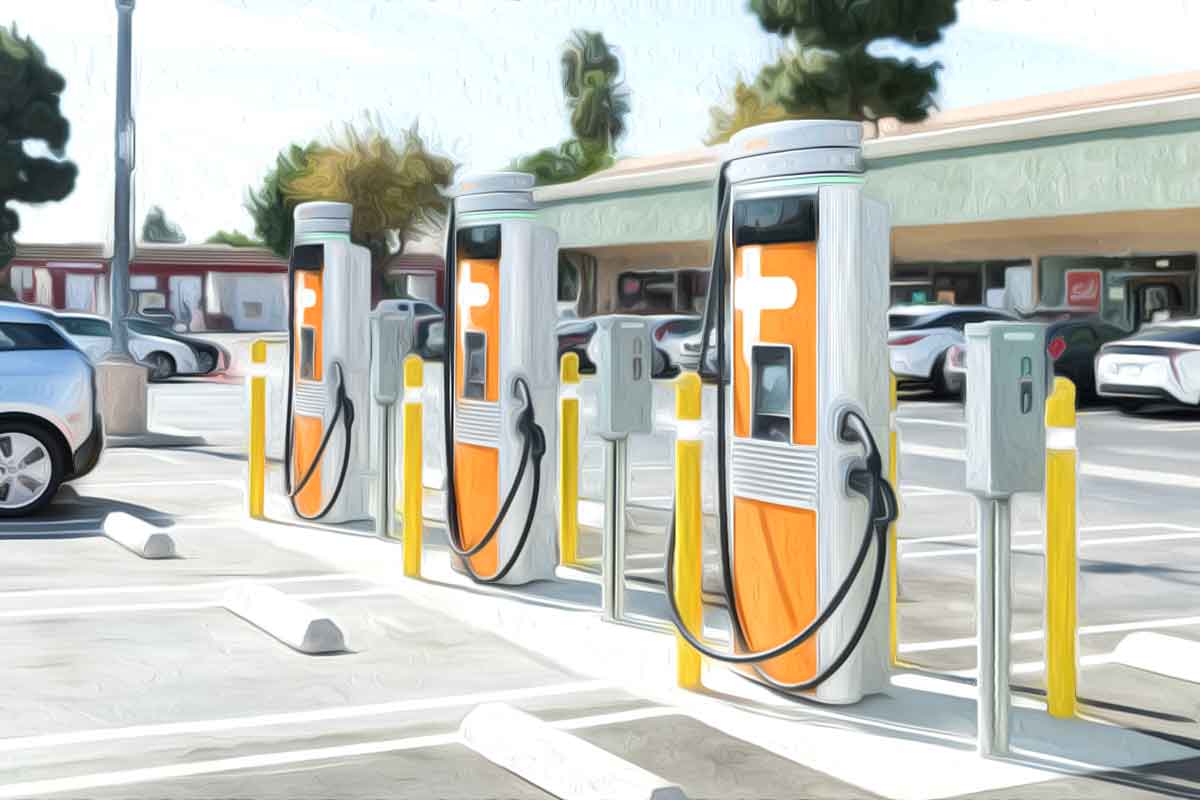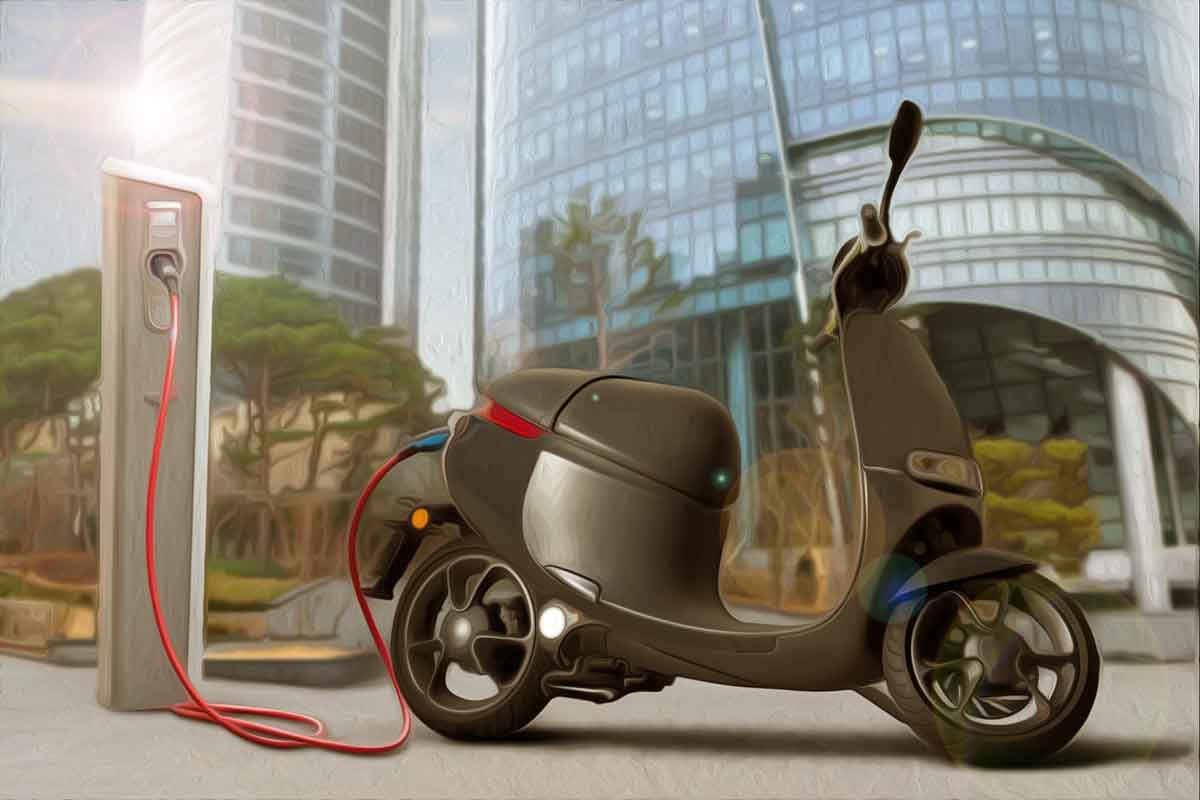NITI Aayog in talks with Indian Railways for putting up EV charging infrastructure powered by renewable energy resources across the country: India aims to become net-zero carbon emitter by 2030

The NITI Aayog is in talks with the Indian Railways to set up Electronic Vehicle (EV) charging facilities across major railway stations in the country. The draft policy, to promote electronic vehicles among the masses, has been submitted to the Railways by the NITI Aayog.
The primary policy drafted by the NITI Aayog recommends putting up EV charging infrastructure powered by renewable energy resources with the aim of Indian Railways to become net-zero carbon emitter by 2030. Amitabh Kant, CEO of NITI Aayog, while talking about the policy has said that the facility can be immediately started at 123 newly redeveloped railway stations as a pilot project. The railways can thence scale up the policy across Railway stations in the country by 2030. “Railway stations are landmark locations and they play a unique role in the entire transport sector, which make them strategic locations for providing public charging solutions for EVs,” he added.
 |
The decision is in recognition of the Central Government’s FAME-II (Faster Adoption and Manufacturing of Hybrid and EV) scheme which aims to foster quick adoption of EVs as a sustainable boost to the transport sector. Under the scheme, the central government aims to support 7,000 e-buses, 500,000 electric three-wheelers, 55,000 electric four-wheeler passenger cars, and one million electric two-wheelers through subsidy. To establish a critical and accessible EV charging infrastructure network across the country, railway stations can provide secure and accessible charging infrastructure to city residents, NITI Aayog officials said. Responding to this move, Rajeev Jain, additional DG, PR, railway ministry, said, “We have very recently received the communication. We are working on it.”
Last week, The Central Ministry of Power had given nod to allow charging of EVs using existing electrical connections at homes, offices while issuing guidelines and standards. The new guidelines also enable individuals to set up public charging stations without the requirement of a license. Steps for laying out a critical EV charging network have come after India witnessed a 132% growth in the sale of electric two-wheelers in 2021.
 |
India saw triple-digit growth in the sale of electric two-wheelers in 2021
Sales of electric two-wheelers (E2W) in India increased by 132% year-on-year (YoY) in 2021, the Society of Manufacturers of Electric Vehicles (SMEV) said in a new report published on January 6.
A total of 233,971 electric two-wheelers were sold during the year as compared to 100,736 a year ago.
Hero Electric with 34% of the market share was the top seller of registered electric two-wheelers in India in 2021. Okinawa (22%) and Ather (12%) were the other two companies with double-digit market share in the top ten.
The high-speed electric two-wheelers that can go beyond 25kmph and require a full license to operate, grew at an even higher 425% YoY as compared to low-speed counterparts which grew only by 24%. Low-speed electric two-wheelers can muster speeds under 25kmph and require no license or registration. According to SMEV, low-speed electric two-wheelers were in demand until 2020 and accounted for 70% of all sales. However, interest in it has waned in 2021, especially in the October-December quarter when its market share dropped to less than 15%.
SMEV has attributed this to the subsidies on high-speed electric two-wheelers under the FAME 2 policy that have made them more affordable as compared to low-speed two wheels. FAME 2 or Faster Adoption and Manufacturing of (Hybrid &) Electric Vehicles in India is an incentive-based scheme by the government of India to subsidize the making and buying of electric vehicles including two-wheelers. According to Sohinder Gill, director-general of SMEV, the recent changes in EV policy through FAME 2 were game-changing for the EV industry.
 |
“In the last 15 years, we collectively sold around 1 million electric two-wheelers, e-three wheelers, e-cars, and e-buses, and we will most likely sell the same 1 million units in just one year beginning January 2022,” said Gill.
Gill believes that in the next 12 months, the sales will grow 5 to 6 times more.
“Customers have now started shifting in large numbers from petrol two-wheelers to electric ones due to attractive prices, lower running costs, and lower maintenance. A significant percentage of customers also factor in the environment and sustainability in their decision to buy an electric two-wheeler,” he added.
Electric motorcycles accounted for only 2% of the market, while the rest were electric scooters, said Gill, even though all-electric two-wheelers sold in India are called electric bikes or e-bikes. Electric cycle sales in India have been negligible and traction in them has just started, he added.
References:
opindia.com - OpIndia Staff
 Support Us
Support Us
Satyagraha was born from the heart of our land, with an undying aim to unveil the true essence of Bharat. It seeks to illuminate the hidden tales of our valiant freedom fighters and the rich chronicles that haven't yet sung their complete melody in the mainstream.
While platforms like NDTV and 'The Wire' effortlessly garner funds under the banner of safeguarding democracy, we at Satyagraha walk a different path. Our strength and resonance come from you. In this journey to weave a stronger Bharat, every little contribution amplifies our voice. Let's come together, contribute as you can, and champion the true spirit of our nation.
 |  |  |
| ICICI Bank of Satyaagrah | Razorpay Bank of Satyaagrah | PayPal Bank of Satyaagrah - For International Payments |
If all above doesn't work, then try the LINK below:
Please share the article on other platforms
DISCLAIMER: The author is solely responsible for the views expressed in this article. The author carries the responsibility for citing and/or licensing of images utilized within the text. The website also frequently uses non-commercial images for representational purposes only in line with the article. We are not responsible for the authenticity of such images. If some images have a copyright issue, we request the person/entity to contact us at This email address is being protected from spambots. You need JavaScript enabled to view it. and we will take the necessary actions to resolve the issue.
Related Articles
- Car manufacturers Celebrating Pro-terrorism stand on Kashmir has invited massive criticism from National auto dealers’ body: Urges the Ministry of Heavy Industries & SIAM India to seek clarifications
- e-commerce giant Amazon hurt Indian sentiments by printing national symbols on various products like shoes, mugs, and T-shirts: FIR registered and Bhopal Police Commissioner sent notice to the company
- NASA data decodes that pollution on Diwali caused by stubble burning, not firecrackers: Media campaign against Diwali baseless
- 'The Monk Who Transformed Uttar Pradesh and The Monk Who Became Chief Minister': Noted Author, Shantanu Gupta, who wrote bestsellers on Yogi Adityanath reached the USA for a multi-city book tour amid UP elections
- Ministry of External Affairs summons South Korea Ambassador over the pro-terror stance of Hyundai Pakistan on Kashmir and expressed strong displeasure of the Government: Korean Minister Yong exhibit regret
- Beauty and fashion unicorn Nykaa IPO subscribed over 80 times, retail segment 12.2 times
- Delhi Govt completes liquor license allotment in all 32 zones under new excise policy; earns ₹8,900 crore
- Hyundai celebrating ‘Kashmir Solidarity Day’ had been facing nationwide boycott calls in India: Issues second statement that post by Pakistani counterpart unauthorised, expresses ‘regret’ for pro-terrorist stand
- Tata Group officially takes over the airline from the union government, says we are committed to making it a world-class airline: ‘Golden age of Air India lies ahead’
- Started small and turned it into successful multi-crore businesses: Introducing Indian agarbatti brands
- Are We Alone in the Universe? NASA hints at the possibility of extra-terrestrial life, wants to establish New framework
- In yet another milestone of BJP, Indian Railways First-Ever Freight Train Reaches ‘Rani Gaidinliu Railway Station’ marking a major breakthrough for railway authorities: Manipur
- Muslim doctor hailed by his fraternity for the medical breakthrough of pig-to-human heart transplant draws backlash from his own family over the use of an animal that is forbidden in Islam
- Hyundai India promotes disintegration of Jammu and Kashmir from the Union of India: Started blocking netizens after they question whether they endorse their Pakistani counterpart’s views on Kashmir
- George Soros’s Open Society Foundation-funded Institute Peace Research Institute Oslo (PRIO) names Open Society functionary Harsh Mander in unofficial shortlist for Nobel prize













